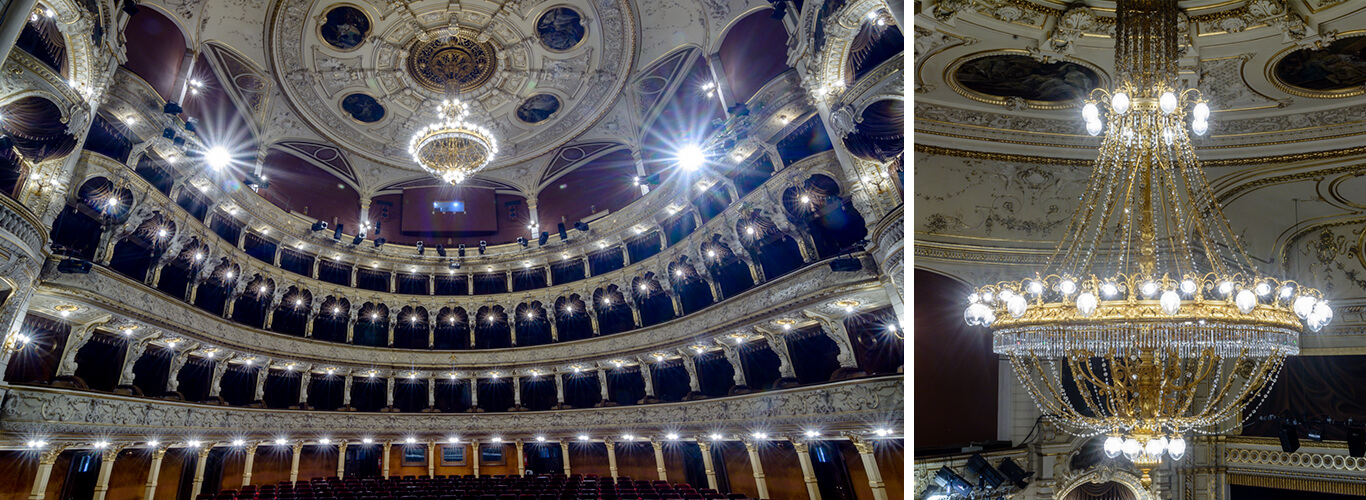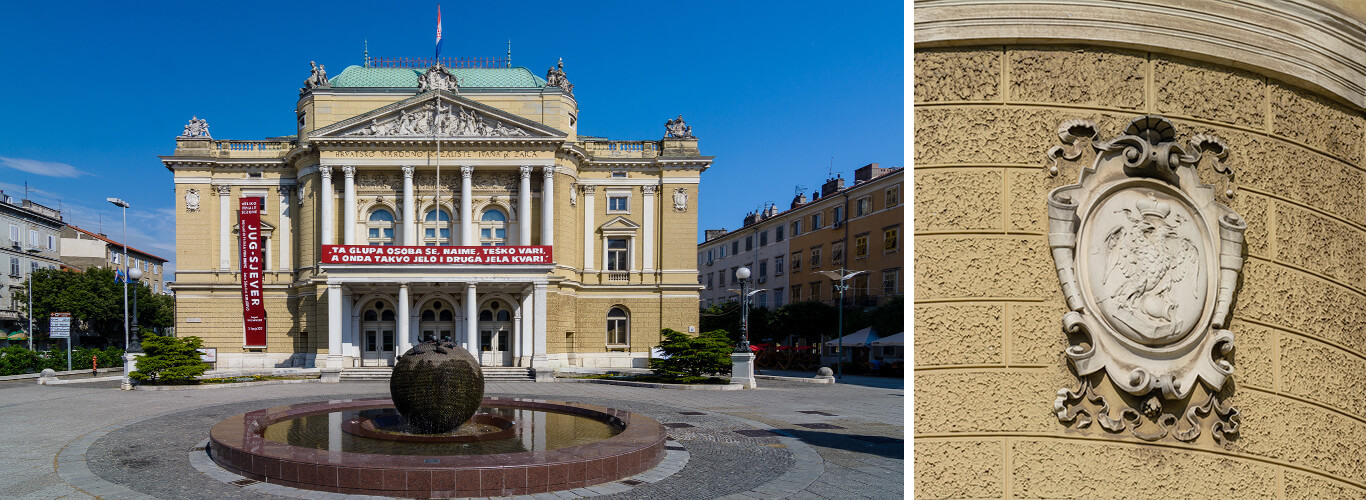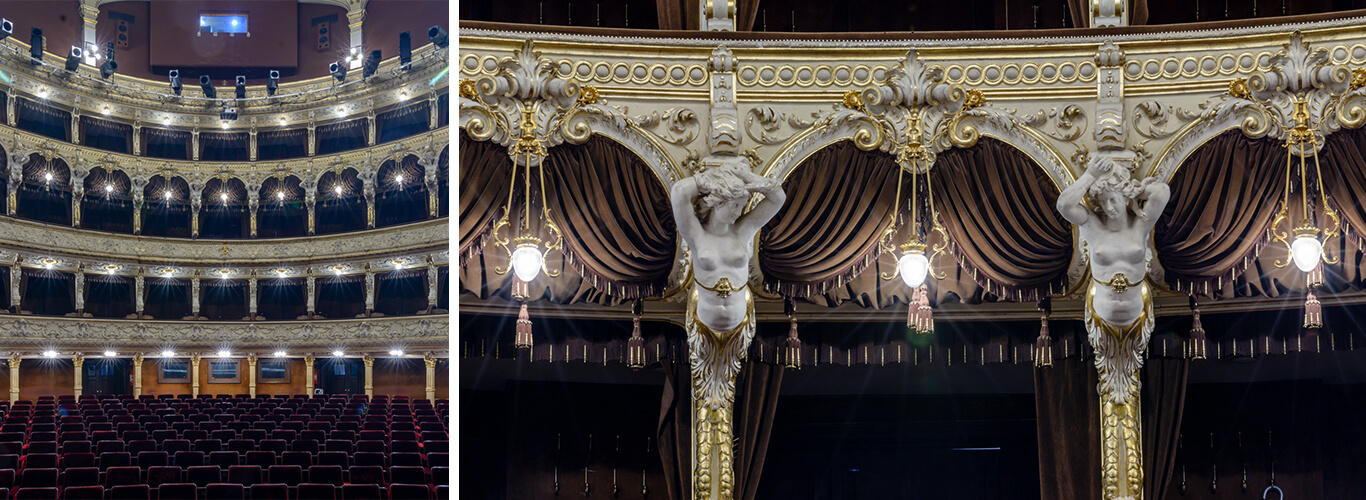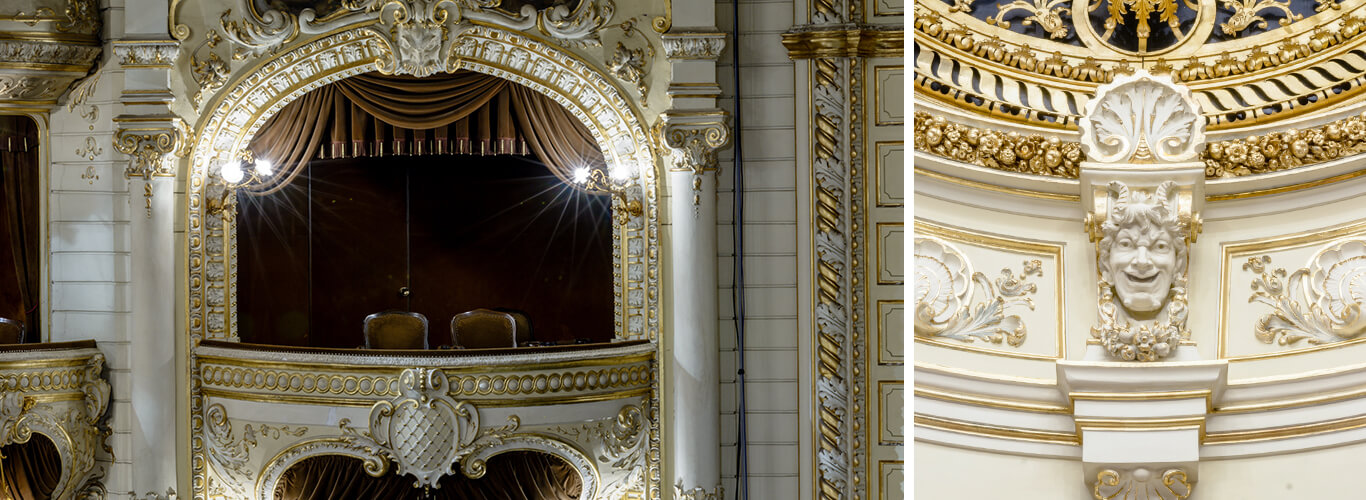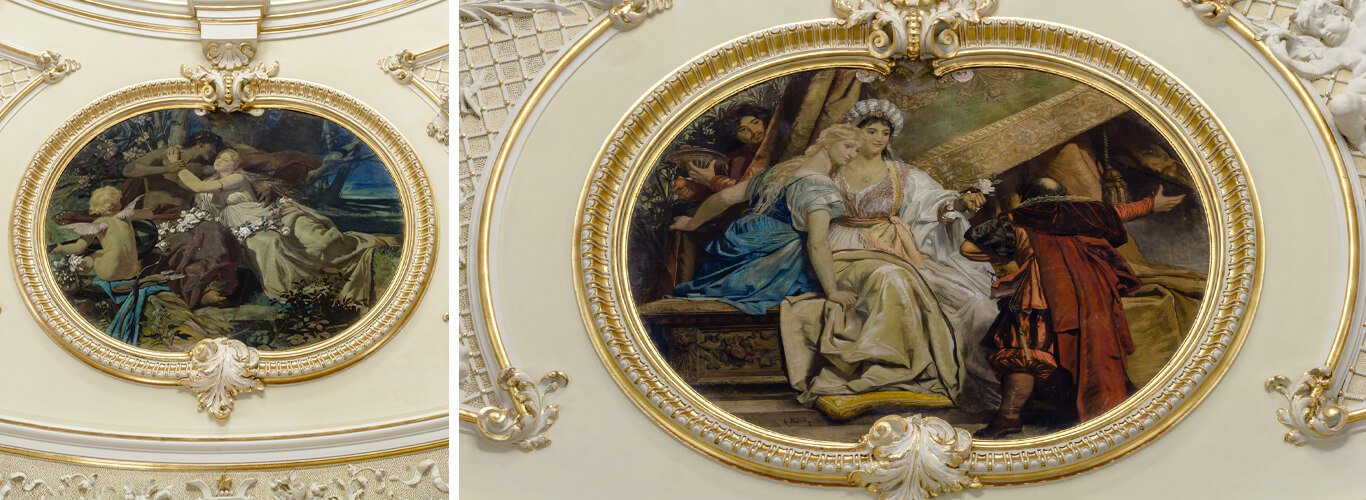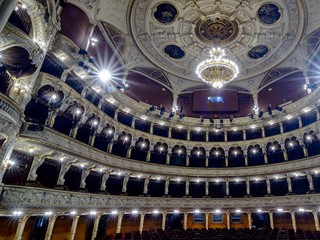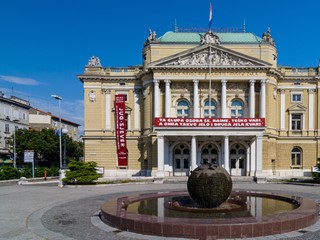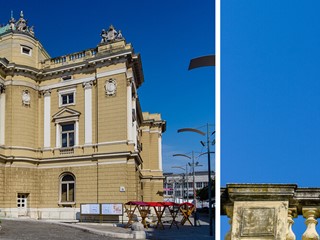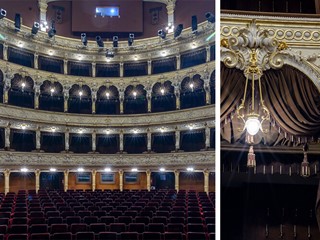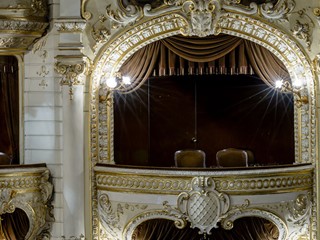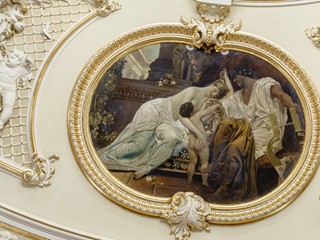Croatian National Theatre Ivan pl. Zajc
address: 1 Uljarska StreetPeriod: Historicism
Kind: Immovable material heritage
Century: 19
Year: 1885
Purpose: cultural
The Croatian National Theatre Ivan pl. Zajc was open to the public in 1885 under the title Teatro Comunale. The authors of the structure were the architects Ferdinand Fellner and Hermann Helmer, the heads of the Viennese Bureau Fellner and Helmer, who made more than 48 theatres throughout the Austro-Hungarian Monarchy.
Before the today's building of the Theatre, the cultural life in Rijeka since 1805 took place in the building of the Adamić's theatre, located at the place of today's Palace Modello. However, already in the 1880s, it was no longer suitable to Monarchy's standards, especially when it came to safety in case of fire. This is why the city authorities, with the mayor Giovanni Ciotta, decided to invest in a new theatre.
The new theatre was constructed in neo-Baroque style. The statues for the façade were made by the Austrian sculptor Völkel, while the Gustav and Ernest Klimt art workshop painted the ceiling of the new theatre. The first performances were those of Aida by Giuseppe Verdi and La Gioconda by Amilcar Ponchelli. Electric lighting shined for the first time in the city precisely at the opening night of the first performance – Aida.
In 1913, the theatre changed its name into Teatro comunale Giuseppe Verdi, and after 1946 into Teatro del popolo.
The theatre got its today's name in 1991, when it became one of four national theatres in the Republic of Croatia.
The grand edifice of the theatre in the co called citta nuova, next to the residential buildings, the palace Modello and the buildings of the market, make the new high-society part of the city. Even today, the building of the theatre dominates over the area and represents one of the most valued accomplishments of historicism in the city.
Ivan pl. Zajc (Rijeka, 3 August 1832 – Zagreb, 16 December 1914) is a Croatian composer of Czech origin. He went to school in Milan, and he worked in Rijeka, Vienna and Zagreb. He left behind an extremely rich opus: 1200 various works for the orchestra (Symphonic Musical Image), chamber groups and the piano groups, 19 operas (Mislav, Ban Legent), 26 operettas, stage music (for Dubravka by Ivan Gundulić), oratorium Oče naš, about 50 cantatas (Dolazak Hrvata), 19 masses, 14 Ave Marias, 200 choirs (Glasna jasna, Putnik) and 170 solo songs (Miruj, miruj, srce moje, Moja lađa, Vir, Lastavicom, Domovini i ljubavi, Djevojka i ruža).
Valorization:
The building of the Croatian National Theatre Ivan pl. Zajc is included in the List of Protected Cultural Goods in the Republic of Croatia Register of Cultural Goods.
Bibliography:
Matejčić, Radmila, Kako čitati grad, Izdavački centar Rijeka, Rijeka, 1990, pp. 167–171, 229–232.
Dubrović, Ervin, Kazališni život Rijeke 1629. – 1945., Sušaka revija, vol. 7, no. 25, 1999, pp. 41–54.
Lukežić, Irvin, Mala povijest riječkog spektakla, Sušačka revija, vol. 6, no. 21, 1998, pp. 71–86.
http://hnk-zajc.hr/
Palinić, Nana, Riječka kazališta: nastanak, kontinuitet i značenje kazališnih zgrada i scenskih prostora u razvitku urbane strukture grada, State Archives in Rijeka, University of Rijeka Faculty of Civil Engineering, Rijeka, 2016.
Palinić, Nana, 125 godina električne energije u Rijeci, Zagreb: HEP distribucija: State Archives in Rijeka, 2006.
Ruck, Lovorka, Skladatelj Ivan pl. Zajc, State Archives, Rijeka, 2002.
Nepokoj, Denis, Kazalište Rijeka, Maritime and History Museum of the Croatian Littoral, Rijeka, 2014.
Pustišek, Deborah, Kazalište priča: izložba predmeta iz Zbirke kazališne građe, City Museum of Rijeka, Rijeka, 2015.

